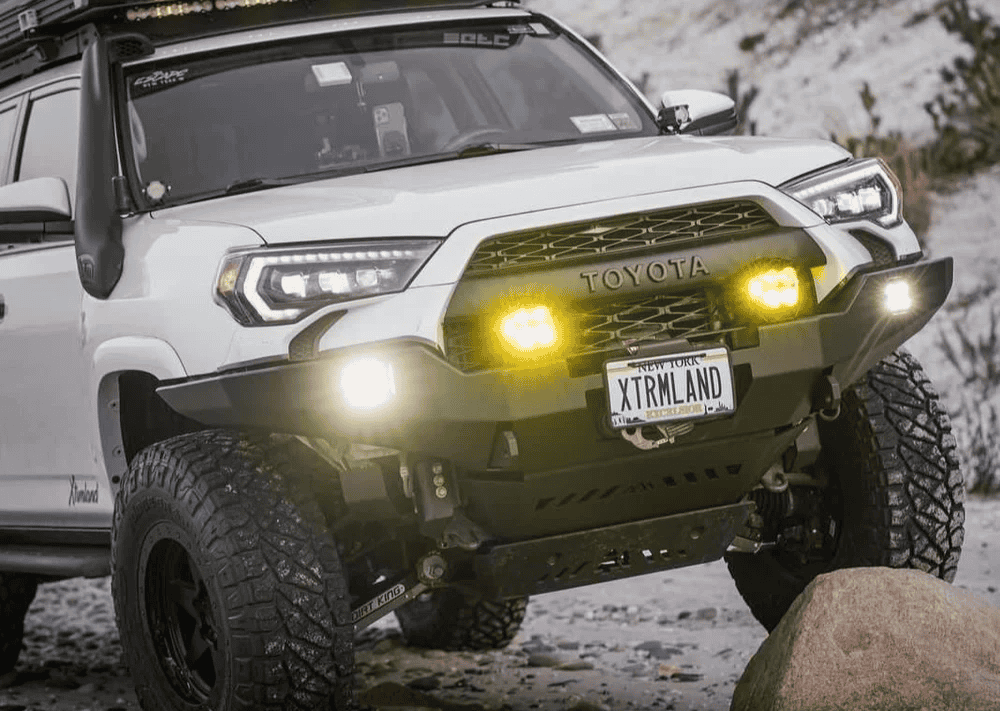Overland Vehicles

A fire suppression system is a coordinated safety solution that detects abnormal heat or combustion and releases an extinguishing agent to control or put out a fire. Unlike a handheld extinguisher, it acts even when no one is present, cutting response time and reducing damage. In mobile environments like vans and overland rigs, suppression protects high risk zones such as engine bays, inverter and battery compartments, cooking areas, and wiring harness junctions.
Detection can rely on heat, smoke, flame sensing, linear heat cable, or a combination through a control module. Activation may be automatic or manual. The system routes agent to nozzles targeted at likely ignition points, accounting for airflow, ventilation paths, and enclosure volumes.
Common agents include clean agents that leave no residue and are safe for electronics, dry chemical for rapid knockdown of fuel or oil fires, water mist for cooling and oxygen displacement, foam for flammable liquid hazards, and condensed aerosol for compact compartments. Selection depends on the hazard profile, cleanliness needs, and the space available for cylinders and plumbing.
Thermal sensors, rate of rise sensors, and linear heat detection cable provide stable performance in hot engine spaces. Optical flame sensors are helpful where smoke may not be a reliable indicator. Many systems blend inputs, using control logic to minimize false alarms while still acting quickly during true events.
Mapping coverage involves nozzle placement at ignition points, calculating flow rates, and ensuring agent concentration or application rate meets the expected hazard load.
A dependable system includes status indicators, pressure gauges, and sometimes networked alerts. Inspection and testing schedules follow manufacturer guidance and the local authority having jurisdiction, often referencing standards for agent types. Routine checks verify pressure, cable integrity, nozzle alignment, and that manual actuators are unobstructed.
Start with a risk assessment. Identify fuel sources, ignition points, and ventilation patterns. Vans and overland rigs present mixed hazards: gasoline or diesel, oils, high current cabling, inverters, chargers, and potentially propane or induction galleys. The suppression approach should match those realities, including compartment volume, panel access, and serviceability on the road.
A well designed layout minimizes blind spots and protects critical paths. Engine bays benefit from heat sensing and fast acting agents. Electrical zones need clean suppression that will not damage circuits. Cooking spaces need nozzle coverage near burners or hot plates. If the rig will see remote terrain, choose components rated for vibration, dust, and temperature cycles.
Hardware must be secured to structure with brackets that tolerate movement and shock. Routing should avoid sharp bends and heat sources that could degrade lines or cable. After commissioning, periodic inspection validates pressure, detection continuity, and manual pull function. Recordkeeping is important, particularly for insurance documentation.
Do not undersize cylinders for the compartment volume. Avoid nozzle placement that sprays into obstructions or away from actual hazards. Do not rely only on smoke detection in areas with frequent dust or cooking vapors. Always leave clear access to manual actuators and never block visual indicators.
Modern builds can integrate suppression status into a central display, alongside battery and inverter monitoring. Audible alerts and indicator lights help occupants respond quickly, shutting down fuel pumps or inverters if needed. Some systems can trigger relays to cut power or fuel automatically during discharge.
In a custom van or overland rig, safety upgrades should work as hard as your suspension and power system. Our team in Fayetteville Arkansas outfits mobile platforms with suppression that targets engine heat, lithium power banks, and cooking areas without adding clutter. For a deeper look at platforms and use cases, explore Explore overland rigs.
When your build calls for integrated safety alongside racks, lighting, and power, coordinated planning pays off. See how specialty upfits come together on Custom overland upfit to understand our approach to hazard mapping, cable routing, and service access that keeps trailside maintenance simple.
If you want a shop that listens first and builds second, learn what sets our process apart at Why choose OZK Customs. We align system choice, nozzle placement, and monitoring with the way you travel so protection never gets in the way of adventure.
Safety is not an afterthought. Tell us about your platform, where you roam, and the zones you want covered. We will design and install a fire suppression system that fits your van or rig and the miles ahead.
Ready to outfit your van or overland rig with an expertly engineered fire suppression system? Tell us about your platform, power system, and use case, and our team in Fayetteville Arkansas will design, install, and validate a solution that fits how you travel. Submit the form now to secure build time and get a tailored safety plan.
ADDRESS:
6159 E Huntsville Rd, Fayetteville, AR 72701
PHONE:
(479) 326-9200
EMAIL:
info@ozkvans.com